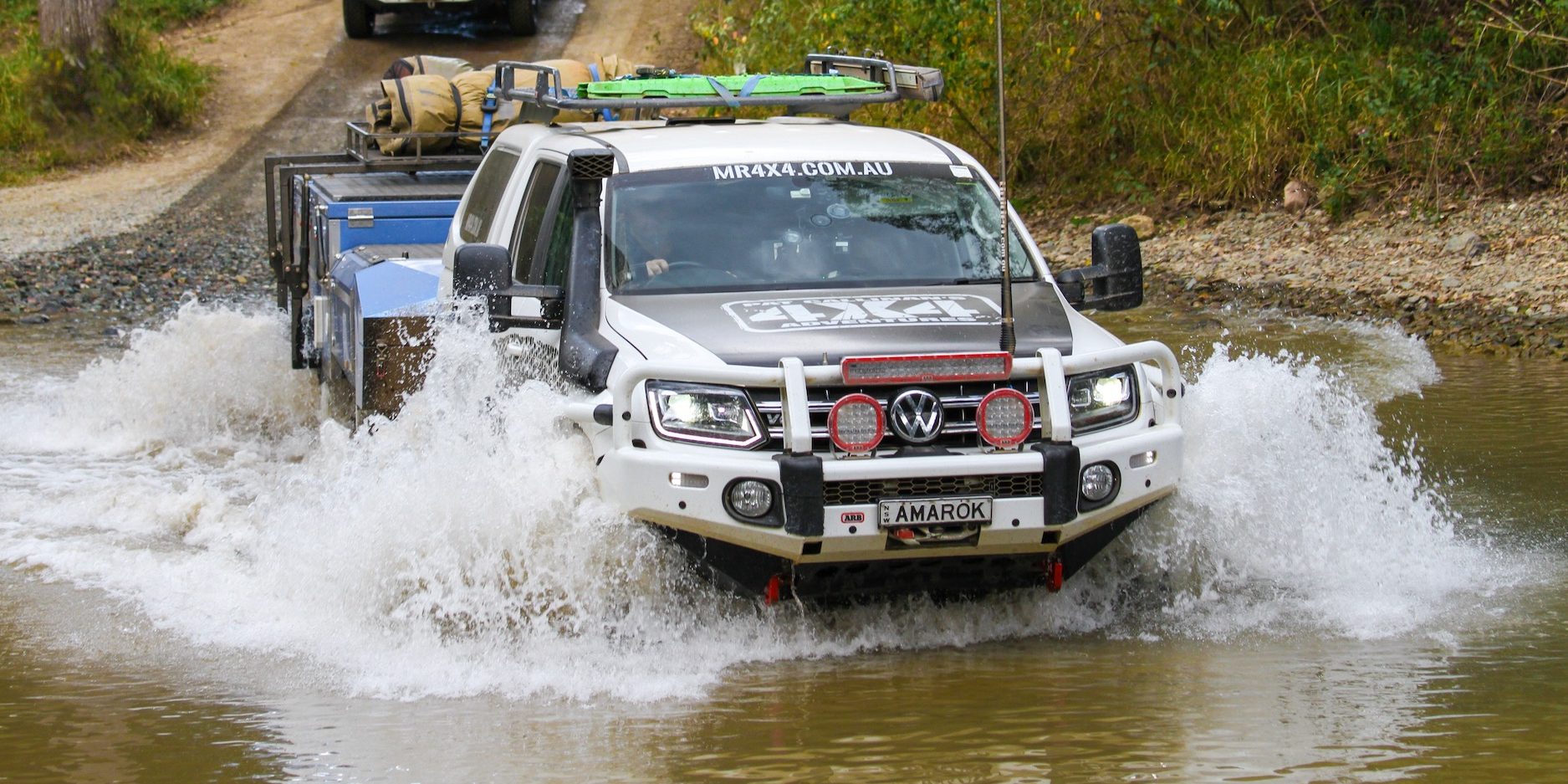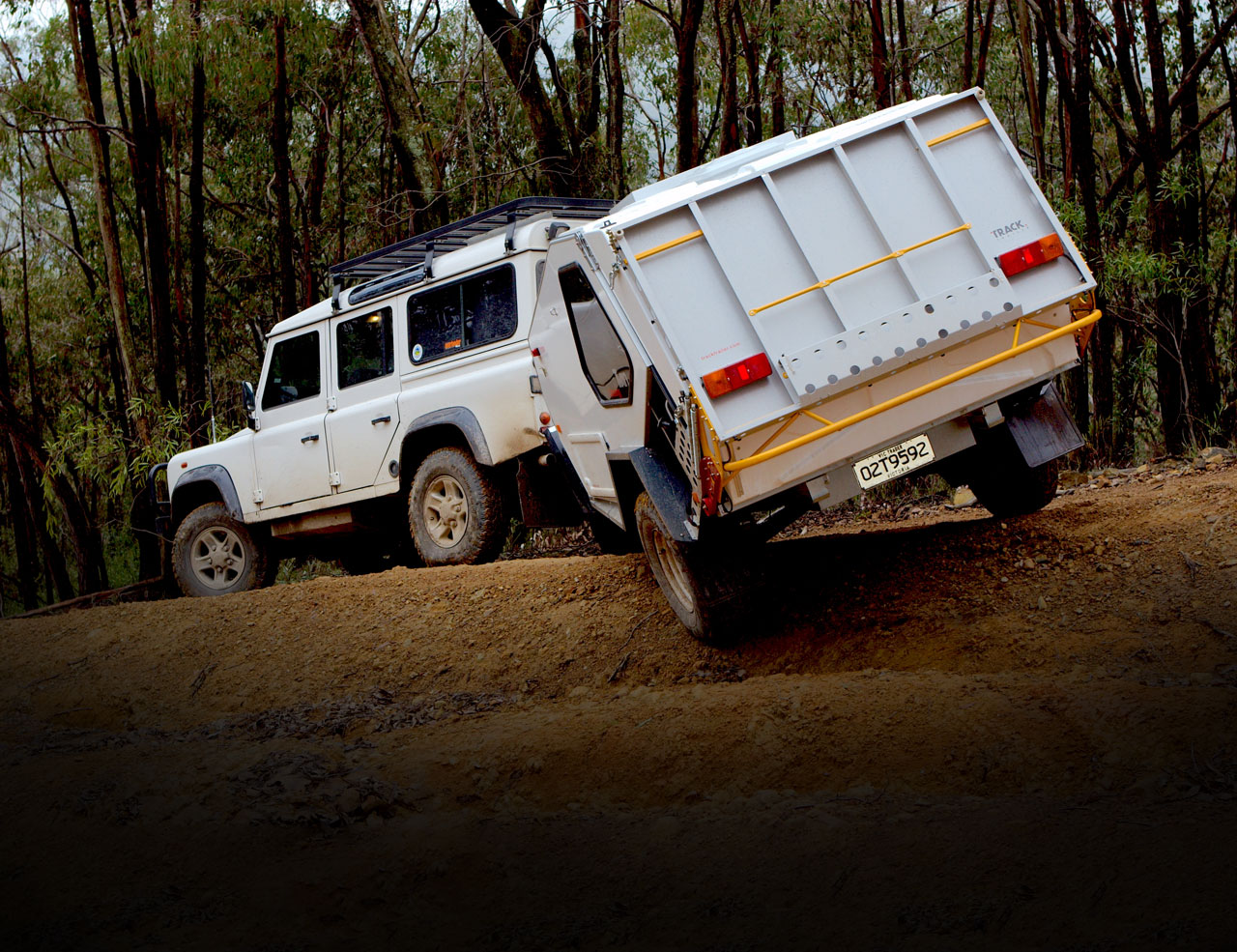The borders are open after a shocking 2020 and we’re all itching to get away, but make sure you check your insurance before you head bush these holidays.
Itching to get away after a year of lockdowns? Make sure you check your insurance coverage first. Despite how quiet it has been for many of us with travelling, adventuring and touring put on hold while we weathered the COVID-19 storm, modifying and adding accessories to our four-wheel drives appears to have continued unabated. Something that we may have forgotten, and I too am guilty of, is not checking that our vehicle’s insurance coverage is up to date, or up to the right value for the accessories and modifications fitted to it.
As insurance is often one of the last things we think about, I thought it would be wise to conduct a case study, using my HiLux as an example, regarding the level of insurance coverage that I had. Now, bear in mind, each of our four-wheel drives will differ in the level of modifications and accessories, but as you’ll see it is these ‘extras’ that make up the lion’s share of gear that I had never considered, and you probably haven’t either.
Unable to recall all of the gear I had fitted to my vehicle over the last couple of years, I sat down with Aiden Frost, who is the Marketing Manager for Club 4X4 Insurance, and he pointed out many of the accessories that I failed to include on my policy, highlighting why I, like you should regularly check your insurance coverage.
Let’s take a look at the case study, and work from the original list through to the updated list, to figure out what I’ve missed and why those items should be included on my policy.
Wes’ HiLux
Make: Toyota
Model: HiLux – Dual Cab – Cab Chassis
Series: GUN126R
Badge: SR
Year: 2018
Kilometres: 72,000
Redbook Price: $34,000 – $38,000

Here you will find the accessories that I had included on my policy, and their insured value, which I had covered at their replacement value. Bear in mind that the prices have changed a bit from when I first purchased most of these accessories for the HiLux.
- Dobinson lift kit – $1500
- Kings steel wheels – $525
- ProVent catch can – $320
- ARB bash plates – $800
- ARB brush bars/steps/bullbar – $3600
- WARN Magnum 12KS winch – $1900
- GME XRS UHF + aerial – $600
- ARB Compressor with pump-up kit and remote plumbing – $800
- Ultravision LED spotlights – $1600
- Rola Titan roof cage – $550
- Rydge Ryder solar panels – $360
- Redarc BCDC1240D – $700
- ARB Elements 60L fridge – $1699
- MSA fridge drop slide – $880
- Travel Buddy 12V marine oven – $350
- Korr lighting kit – $230
- Kenwood DDX 919WS – $900
- Kicker speakers/amps – $1300
- Brass Monkey 15L fridge – $199
- Alloy canopy – $1200
- Clearview mirrors – $1200
- SupaPeg awning – $800

All up, this is a total of $22,013 worth of accessories fitted to the vehicle, and with the market value of the vehicle being around $38,000. So, as far as I was concerned, I was pretty much spot on the money, as the HiLux was insured for an agreed value of $60,000 (with all accessories included in the sum insured).
After speaking with Aiden, I had him cast eyes over the HiLux to see if he could find anything that I had missed. Bear in mind I was focusing on the ‘extra’ accessories which I had added, above and beyond a ‘standard four-wheel drive’. Fortunately, for me, Aiden picked up on more than a couple of things that had not crossed my addled brain.
The list of gear that I had missed is as follows (with pricing to match).
- Tow bar – $550
- Jerry cans – $60
- Aluminium tray – $1900
- Roof racks – $437
- Electrical fit-out (switches, wiring, relays, terminators etc.) – $500
- Auxiliary battery – $450
- Rear toolboxes under tray – $520
- Snorkel – $550
- Roof-mounted light bar – $290
- Gauges and pillar pod – $200
- TPMS – $299
- Scan Gauge II – $299
- Secondary fuel filter kit – $400
- 12V sockets (various)- $80
- Seat covers and mats – $1100
The gear I missed adds up to a further $7635, of which, up until that point, I was not covered for. Indeed, some of it may seem rather obvious, and I should have had it on my policy, but these items had just not crossed my mind while listing the HiLux’s modifications and accessories. This is why you really need to regularly check your insurance.
For example, I had the roof platform on the list, but not the racks that mount to the body of the HiLux. This was also the case for the aluminium tray; the HiLux came as a cab chassis, and so a tray is an extra – doubly so, as my tray is an aftermarket item.
I wasn’t aware I could have the battery covered, nor the electrical fit-out components, however, should something untoward happen to my pride and joy, I would need to replace them. Thus, they were coverable.
Tips for when you call the insurance company
As you’ve no doubt read, make a list of the gear on your four-wheel drive, as I did. However, have someone else, who doesn’t look at your pride and joy every day, glance over it too. Chances are they will come up with gear you’ve just completely missed, and so it doesn’t even pop up on your radar.
From there, when you call the insurance company to discuss values and organise quotes, it is worth taking the time to call them from your mobile phone and walk around the vehicle looking it over while you’re rattling off the modifications you have. If I had done this the first time around, I suspect I would not have felt so sheepish with having Aiden pick out all the gear that I had simply missed.
Aside from just your accessories and modifications, what else should you be thinking about when you’re on the phone to check your insurance? I’m glad you asked.

Geographical Limitations
It’s worth asking your insurer where exactly you are covered and if there are any geographical limitations to your coverage. Many will only include gazetted roads, which seems fair enough until you go exploring and poke your nose down an older unnamed track, which we all invariably come across in our travels. It’s at this point that your coverage may stop.
The same can be said for beaches; are you covered on a beach? Is the local fishing haunt you’ve been to every other weekend covered if it is not a ‘gazetted road’? Or how about Fraser Island? Some policies explicitly state travel on the South East Queensland Islands (Moreton, Stradbroke and Fraser Islands) is not covered.
And then, of course, there is one that has reared its head recently on social media: are you covered for water crossings? Some insurers will not cover you, some will tell you it’s a grey area, and others will certainly cover you, so long as said water crossing is on a named track. Think Crooked River Track in the Victorian High Country; all up there are 24 different crossings along that short track near Talbotville.
Then, of course, there are the 4X4 parks we often find ourselves at on a random weekend away; so far as many general insurers are concerned, these are seen no differently to taking a performance car to a race meet. Simply put, when four-wheel driving on private property you are likely not covered, unless your policy and Product Disclosure Statement (PDS) explicitly state so.

Ways to reduce the cost
Being covered for more accessories and in more places will generally make your insurance a touch more expensive, but many insurers also have ways in which you can reduce your premium. For example, some of the specialty insurers will give you a policy discount for any driver training you have undertaken. A four-wheel driving or off-road driving course with an accredited training organisation will generally get you a discount. The same can be said for towing courses. Some insurers will also offer an affiliate discount if, for example, you are a member of a registered four-wheel drive club.
Then there is the excess side of things. With many policies you can increase your excess to reduce your premium, which is the most often talked about method of reducing insurance costs. Of course, you will need to put that amount of money from your pocket toward any claim that you may have to make. The way to think about the excess is that if there is no one for your insurance company to recover the cost of the claim from, then you will need to pay that excess.
For example, if someone runs into you, you swap details, and the other driver is deemed at fault, then you won’t need to pay an excess. However, if someone hits you, and then takes off without you being able to get their details, you will be liable for the excess. This is where a dashcam comes in handy; aside from capturing the crazy drivers around the country, it can save you a fair amount in excess and limits your risk.
So when you check your insurance, there’s much more to consider than just the value of the vehicle and the accessories fitted to it.

Managing the risk
Now I absolutely understand that if you can get a general insurer to cover you for a couple of hundred dollars a year cheaper than a specialist insurer, then it appears to be money well saved. Until, of course, you need to make a claim.
Essentially, insurance is an exercise of mitigating risk and, unfortunately, that will come down to your circumstances and how comfortable you are with running the risk. Personally, I prefer to be covered as well as I can be; especially in our case study above where I was some $7600 short on my coverage. Increasing my agreed value to the new amount only cost me an extra $12 per month. I am more than happy to pay that and know that I am now covered for all of my gear, no matter what happens or where.
Where this gets a bit more frightening is if you do happen to go with a slightly cheaper general insurer, where would you draw the line? For example, let’s say you’re out four-wheel driving in The Cells National Park, and you happen to drive down a track that, unbeknownst to you, isn’t a gazetted road, and the worst were to happen? If your vehicle needs to be recovered, whoever recovers you will inform the insurance company that you were not on a gazetted road, and your $60,000 pride and joy will no longer be covered. All in the name of saving $200 a year on insurance!
As I said earlier, it all comes down to risk… and what risk you are willing to take with your insurance. So just do it: check your insurance.










